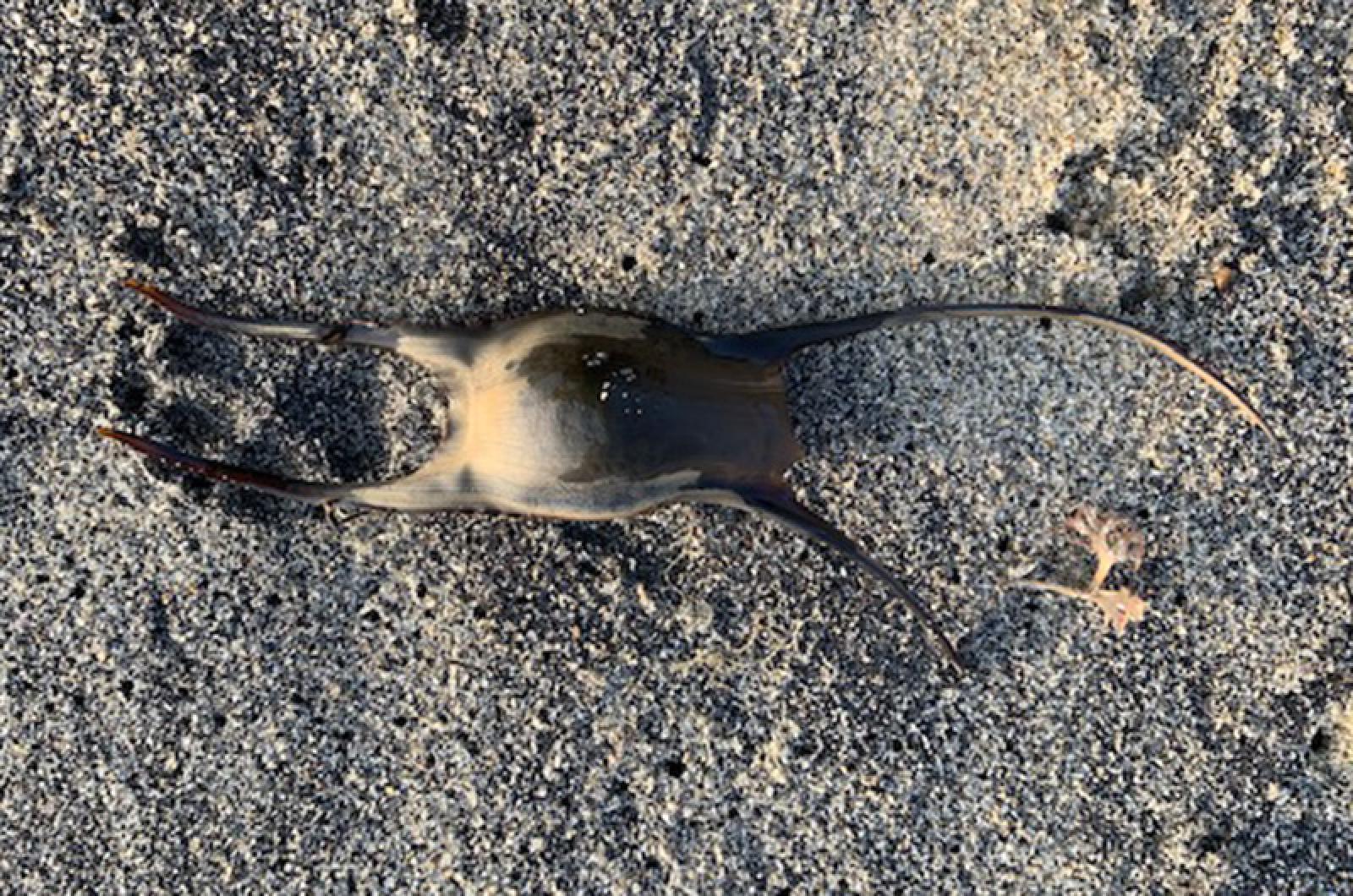My mind is blown. Really, my understanding of the world may never be the same. I am now privy to one of the secrets of the universe. Those wonderful black pointed pouches often seen on the beach, called mermaids’ purses, are the cases that hold the answer. I’ve always known that they are the egg cases of skates, but never could fathom how the magic of reproduction happens in their leathery shell.
Now I know.
Skates are oviparous, meaning they lay eggs which develop outside of the mother’s body. Miraculously, in the case of skates, the black pouches are formed inside of the female’s body and expelled whole — and with those pointy horns. Ouch.
Inside the pouch’s protective covering, a single embryo grows, its body feeding on nourishing yolk and albumen for up to 15 months. With predators like sharks, its survival hangs on a wing and a prayer. For the survivors, a small skate, measuring about three inches wide and five inches long, emerges from the pouch with wings folded to get out of a slit between the case’s horns.
The mating activities that led to those curious cartons and super-small skates are also intriguing. Skates’ gender can be identified by a few characteristics. The easier way is to look for claspers on each side of the animal’s tail: males have them and females do not. Another feature to bite on for identification is the skate’s teeth (which are numerous: about 54 in their upper jaw and 48 in the lower jaw). Males have sharper choppers to hold onto the female during copulation, which can last up to four hours.
If you are not familiar with skates, they are those diamond-shaped, flattened, bottom-dwelling sea creatures that many folks confuse with their larger sting ray relatives.
Considered fish, skates have cartilage rather than bone. This adaptation helps them stay afloat, which is necessary, since they lack swim bladders for buoyancy. The cartilage, especially of the skull, vertebrae and dermal spines, is lighter than bones, but strengthened though calcification, the deposition of calcium and salts.
Skates are quite common in our waters, both as bycatch and as an intentionally harvested species locally, with seven or so varieties found in the North Atlantic. According to the Cape Cod Fisherman’s Association, skate is the third highest-landed seafood in the region. Their wings are used for human food, their tails as lobster bait and their livers for fish oil. Skate cheeks are a specialty gourmet item.
That liver is notable, as skates have the largest liver (relative to body size) in the animal kingdom. A skate’s liver is 25 per cent of the animal’s body mass. Compare that with ours, which is only two per cent.
There isn’t much finfare when it comes to the consumption of skate, and due to its affordability, it is perfect for the cheapskate. Try it, and if it isn’t a hit, always keep in mind there are other fish to fry.
Suzan Bellincampi is director of the Felix Neck Wildlife Sanctuary in Edgartown, and author of Martha’s Vineyard: A Field Guide to Island Nature and The Nature of Martha’s Vineyard.







Comments (1)
Comments
Comment policy »